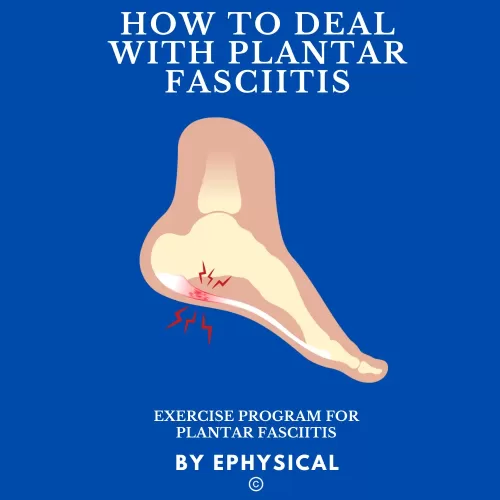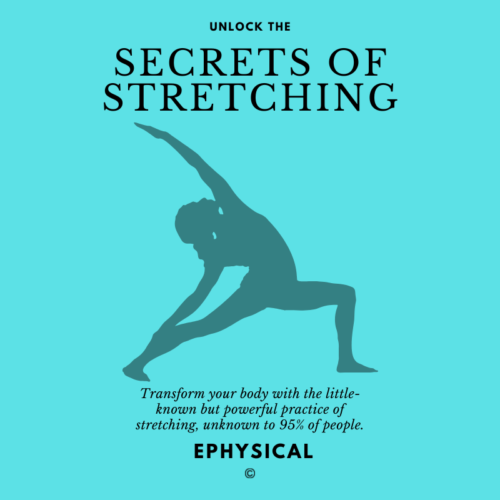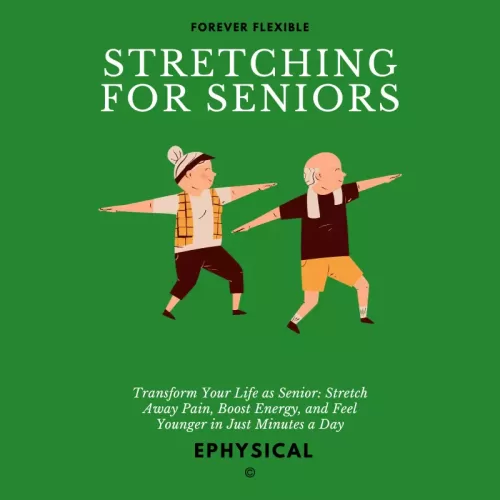How Often Should You Stretch?
How Often Should You Stretch To Increase Flexibility?
One of the biggest dilemmas around stretching is when you can expect real results from your stretching routine. Well, this one is tricky. Why? Because ‘real’ results for you and me might be two different worlds. I might be happy with just being able to touch toes with my hands from a standing position, while you may want to be able to do a full splint.
Another thing is that we are not starting from the same point. Your muscles and joints are unique to your body’s function. Besides that, any muscle or joint-related injury you or I may have had before may postpone results from stretching exercises.
How often should you stretch depends on many factors. That’s why I read a bunch of books on stretching topics, and I went through the latest research regarding stretching and flexibility. Here is what I found out:
You should stretch for six weeks to improve your flexibility. Ideally, you will stretch once per day with a hold of 30s for every muscle group. According to science, stretching from more than 30s will not improve your flexibility, but will lead to a greater decrease in muscle performance. Especially if you hold the stretch for more than 60s. Read the full research about stretching if you want.
Let’s see what else science has to say about stretching and flexibility and if you can learn to do splits at 30,40 or even 50.
| Science And Stretching Exercises |
|---|
| You don’t have to do stretching exercises more than once per day. You won’t become more flexible. |
| You don’t have to hold more than 30s for each exercise. |
| You can expect increase in range of motion from stretching exercises after 6 weeks. |
| Static stretching will reduce muscle performance, especially with hold > 60s. Effect last around 30min. |
| Warm up + dynamic stretching exercises are a good way to prepare your body for physical activity. |
This table shows what science has to say about stretching. Source: effects of muscle stretching, warm-up and stretching,
Why Should I Increase Flexibility?
If you are not sure why you should increase flexibility, here is a straightforward answer.
You should increase flexibility because you are losing your flexibility every day! As you are getting older, you’re becoming less and less flexible/mobile. But that doesn’t mean it’s meant to be so. It’s just a process that you need to be fighting against. The same applies to strength training.
If you lose flexibility and mobility, you will gradually stop being active because it would be unpleasant to move in a way you used to. You don’t want that! You should have the opposite goal. You should explore your body limits, and being flexible is a great way to do so.
With increased flexibility you will:
- Feel better.
- Move better.
- Reduce muscle injuries.
- Perform better at any physical activity.
- Improve body posture.
And so on.
Whether you sit eight hours per day or lift weights on daily basis, flexibility is key for having a good posture and pain-free back. Neglecting it, you put your body at risk from overuse injuries, poor functional movements or poor body posture.
If you can think of any other reasons why should you increase your flexibility, write them in the comment section. Looking forward to hearing from you!
The Ideal Stretching Routine For Me
You may come across various stretching programs online, but sometimes it’s hard to find the ideal stretching routine just for you. Here is some simple advice I have for you, regarding stretching training.
Find a good personal trainer or physical therapist who can analyze your body posture, muscle and joint function, and a lot more. They can help you create a most effective stretching routine.
Now start doing those recommended exercises while following stretching guidelines from scientific research. Find those guidelines above in the table. I guarantee you will achieve your stretching goals.
After talking to various people about stretching, here are some questions they have had regarding stretching training. I decided to list the questions here and answer them precisely:
Can You Stretch For Too Long?
You can stretch your muscles for too long when you’re holding the stretch for more than 30s. Stretching your muscles for more than 30s is unnecessary and will not make your muscles more elastic.
Is It OK To Stretch Twice a Day?
Stretching twice a day is too much for your muscles. Science has proven that stretching your muscles and joints once a day is enough. You won’t become more flexible if you stretch twice a day. You will increase the risk of muscle injury if you start stretching your muscles several times per day.
How Long Does It Take To Get Flexible Hamstrings?
You can expect to improve the flexibility of your hamstrings after 6 weeks. Start with simple stretching exercises such as straight leg raise and hold for 30s. Observe your progress after 6 weeks and you will notice the difference in your hamstring flexibility.
Will Stretching Every Day Improve Flexibility?
Yes, stretching every day will improve your flexibility a lot. Your muscles will become more elastic and joints will be more mobile, assuming you don’t have an injury that’s preventing your joint from being more flexible.
Can I Learn To Do The Splits at 30, 40 or 50?
Yes, you can do both the front and side splints even if you are 30, 40 or 50 years old. Your joints and muscles are perfectly able to be so much elastic, assuming you don’t have any restrictions in joints. You need to choose the best stretching exercises for your body, be persistent and patient, and stick to a plan. Let’s go into details.
When you reach a certain age, your body posture and muscle function may not be as good as ten or twenty years ago. That’s okay. It’s normal. And to do front or side splits, you need to have a lot of flexible muscles and joints working together as one machine. Here is how to achieve that.
You need a unique training plan for splits covering all the weak spots in your body. When you were younger, you could do just a few stretching exercises and achieve a lot. But now, you simply rely on a good training strategy and more time.
I’ll recommend you follow a 15-minutes daily stretching routine because it won’t take so much of your time daily. And you will avoid the risk of muscle injury with a shorter stretching routine.
The most common mistake people make when training to do splits is trying too hard in the beginning, getting muscle injury, and stopping with training.
It can take some time to be able to do splits even if you’re stretching every day. As we grow older, muscles and joints require more time to become flexible and elastic.
Shift your mentality from learning splits in 30 days to following. I will do stretching exercises that help my body be more flexible, and I will do them daily. I will enjoy my journey and, no matter when, I will do splits as my daily routine.
And in the end, don’t stop with your training when you achieve this goal. Because you will lose the ability to do splits. Use it or lose it. Always remember that.
When Should I Stop With Stretching?
Even though I am a fan of stretching exercises, you should sometimes stop with further stretching exercises and shift your focus on other things. Here is when:
When your muscles are weak and causing poor posture, you should focus on strengthening those muscles instead of stretching them. That way you will improve body posture and muscle function in general.
Muscle strains shouldn’t combine with stretching exercises. Instead, you need to wait until your muscles are healthy and start with gentle stretching.
If you experience sharp pain in your muscles during your stretching exercise, stop immediately exercising. Contact your physical therapist and find out what is happening with your muscles.
You should avoid static stretching before strength training or any physical activity. Research says that static stretching will reduce sports performance, especially when stretching a muscle more than 60s. Effects last for 30 minutes. Focus on warmup and dynamic exercises before any sports activity.
When your primary goal is to lose weight, stretching should not be the first thing you need to do daily. You might feel uncomfortable in some stretching positions, which will make you hate stretching exercises.
If joint stability is compromised, you should find out first what’s happening there and why. When you need to choose between stability or mobility, stability is always the right answer.
Can you think of any other situations where stretching exercises are not a top priority? Write them down in the comment section.





